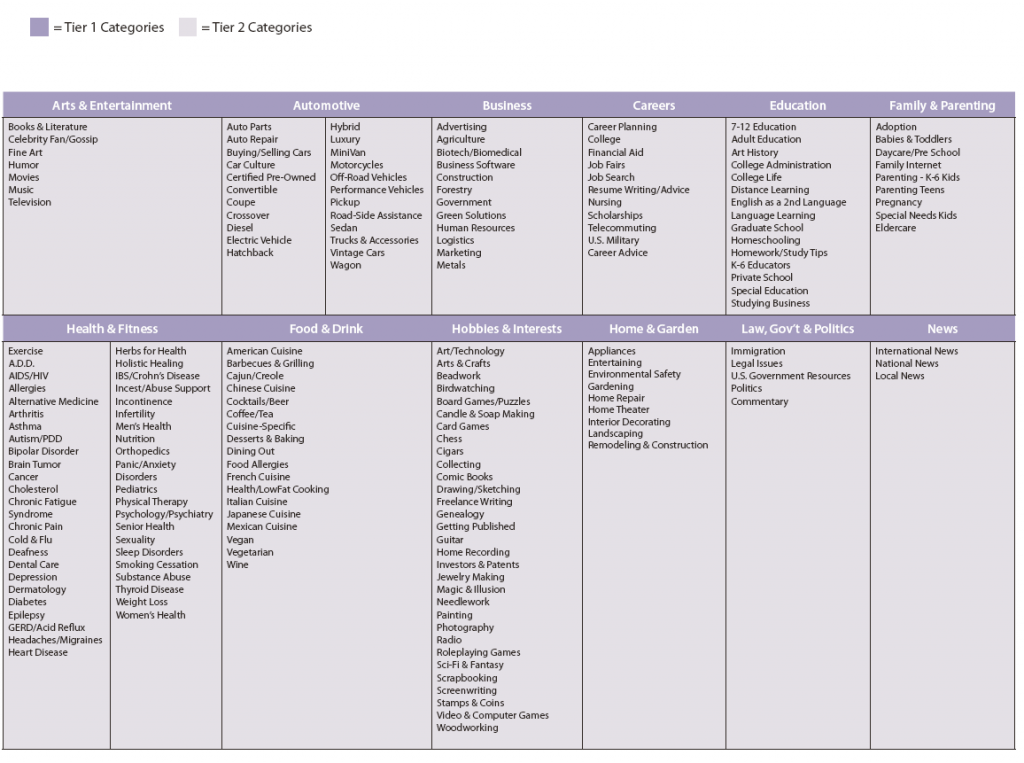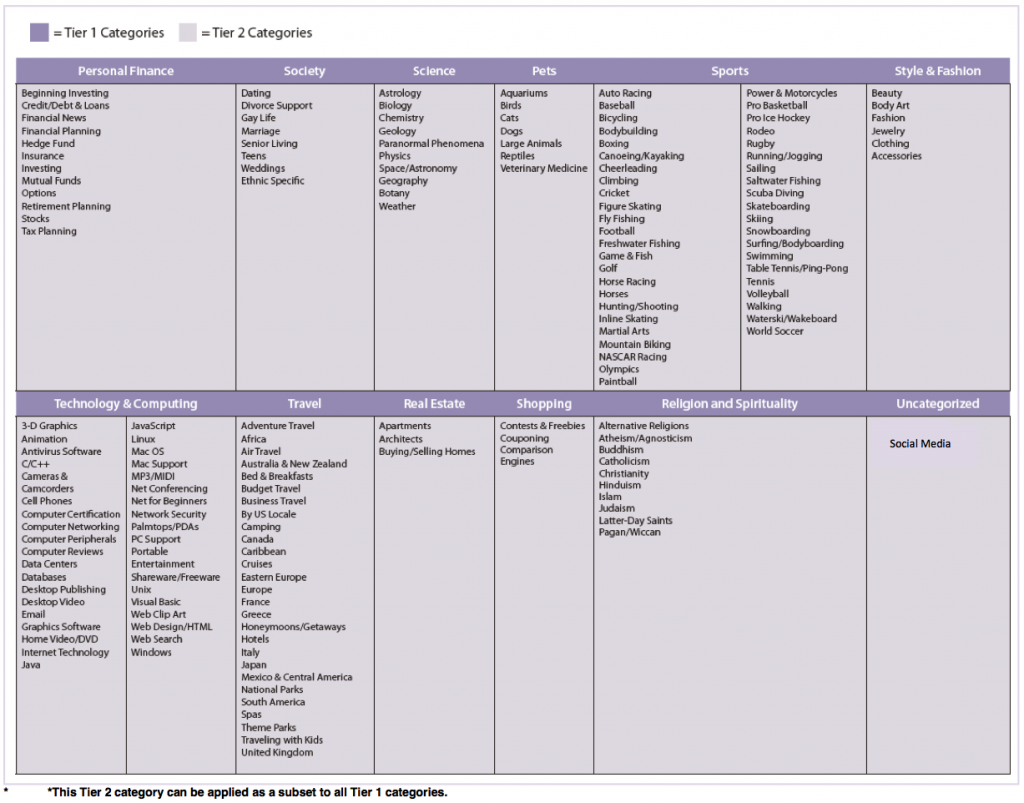Our Text Classification API supports IAB’s standard contextual taxonomy, enabling content tagging in compliance with this model in large volumes and with great speed, and easing the participation in the new online advertising ecosystem. The result is the impression of ads in the most appropriate context, with higher performance and brand protection for advertisers.
What is IAB’s contextual classification and what is it good for
The IAB QAG contextual taxonomy was initially developed by the Interactive Advertising Bureau (IAB) as the center of its Quality Assurance Guidelines program, whose aim was to promote the advertised brands’ safety, assuring advertisers that their ads would not appear in a context of inappropriate content. The QAG program provided certification opportunities for all kinds of agents in the digital advertising value chain, from ad networks and exchanges to publishers, supply-side platforms (SSPs), demand-side platforms (DSPs), and agency trading desks (ATDs).
The Quality Assurance Guidelines serve as a self-regulation framework to guarantee advertisers that their brands are safe, enhance the advertisers’ control over the placement and context of their ads, and offers transparency to the marketplace by standardizing the information flowing among agents. All this, by providing a clear, common language that describes the characteristics of the advertising inventory and the transactions across the advertising value chain.
Essentially, the contextual taxonomy serves to tag content and is made of standard Tiers, 1 and 2 – specifying, respectively, the general category of the content and a set of subcategories nested under this main category – and a third Tier (or more) that can be defined by each organization. The following pictures represent those standard tiers.
The Quality Assurance Guidelines program is now known as Inventory Quality Guidelines (IQG) and is managed by the Trustworthy Accountability Group, an organization in which IAB participates and whose goal is to eliminate fraudulent online advertising practices and to promote Internet brand safety. The taxonomy is now called IAB Tech Lab Content Taxonomy and is being developed and led by the IAB Taxonomy and Mapping Working Group. The Content Taxonomy is an essential part of other IAB standards, as the Real-Time Bidding (RTB) project, formerly known as the OpenRTB Consortium.
The benefits of standardization for advertising buyers and sellers
The certification of sellers ensures a framework for brand safety and transparency for buyers. Sellers who voluntarily agree to be certified are providing marketers and agencies with a standardized approach that is designed to ease the buying process and gives increased control over the ads’ placement.
For buyers, the certification seal represents a symbol of trust and a guide to know which sellers are good actors in the industry and should be considered in customer planning.
For sellers, standardization creates a common, simple, and normalized language that describes and classifies advertising opportunities. This makes inventory purchasing easier for the buyer, which increases the demand for certified sellers. And in turn, this grows the revenue of these vendors, as they are perceived as leaders in the industry, differentiated from dubious agents.
All in all, standardization fosters an environment of trust in the market, increasing business for all trusted players.
How MeaningCloud’s automatic IAB tagging can help
IAB tagging is implemented in MeaningCloud as a standard text categorization model included in the Text Classification API. Using the API with this model you can automatically tag large amounts of content, from the historical archive to new contents in real time. These tags can be used to better manage these contents and to place ads optimally, using contextual/semantic targeting technologies.
By applying automatic standard tagging it is much easier to build tools and applications compliant with industry standards that can be integrated with certified systems, based on OpenRTB and others. A scalable, high-quality contextual tagging enables semantic ad targeting and, therefore, that impressions are displayed in the most appropriate moment and context.
Would you like to check how does MeaningCloud’s automatic IAB tagging work? Try it in our demonstrator, using the Text Classification API test console or read the supported models’ documentation.



